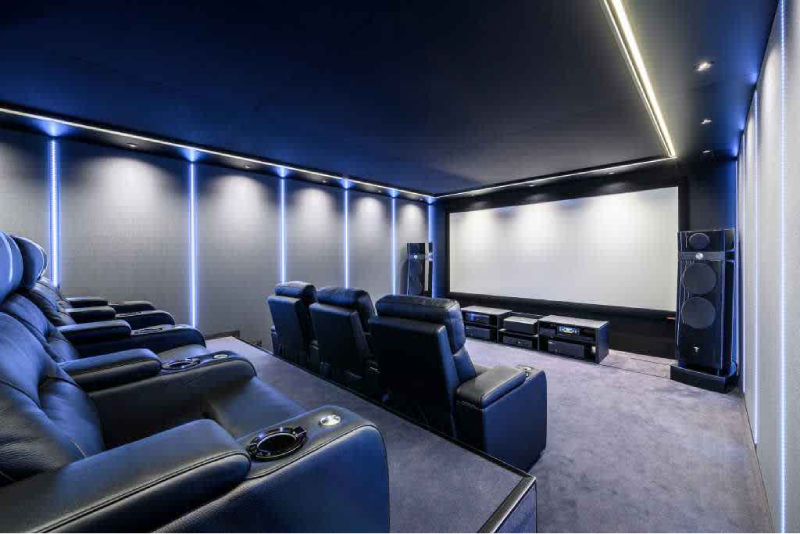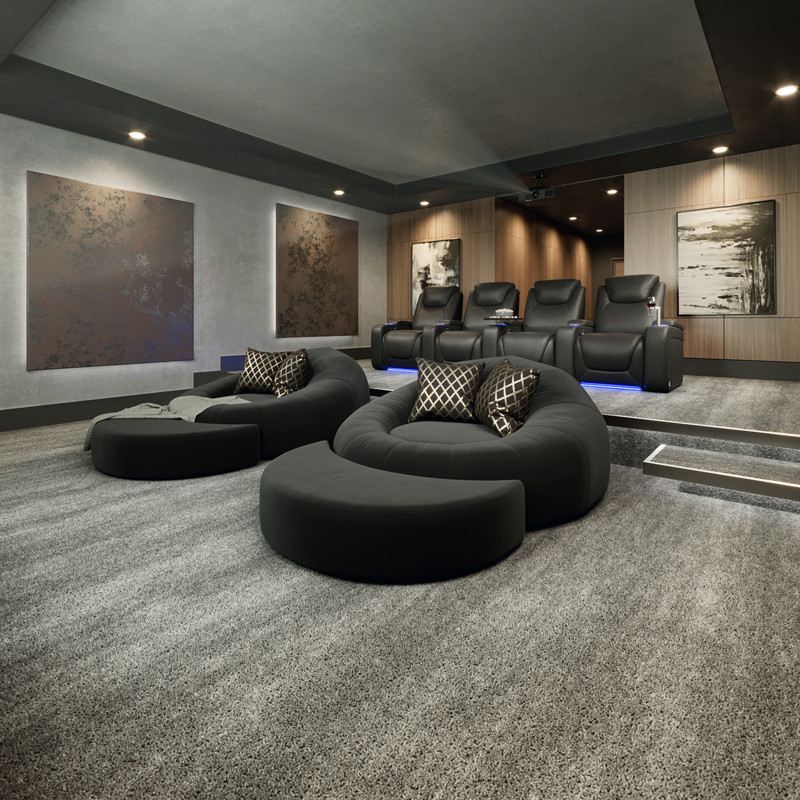Home Theater 101: Every Little Thing You Need to Know for a Cinematic Experience in the house
Developing a home cinema that measures up to the motion picture experience of a business theater includes careful consideration of numerous parts, including screen choice, audio systems, and area format. Whether you are pondering the suitable screen size or the intricacies of border noise, comprehending these fundamentals is essential.
Picking the Right Screen
When setting up a home cinema, picking the ideal screen can make or damage the watching experience - tampa home theater installation. The screen functions as the focal point of your configuration, influencing photo high quality, seeing angles, and total visual. Key variables to think about include display resolution, type, and dimension
Initially, establish the ideal screen size based on your area dimensions and seating distance. Next off, pick between different display kinds, such as fixed-frame, motorized, or retractable screens, each offering distinctive benefits.
Resolution is another important factor. For a really immersive experience, take into consideration a display developed for 4K and even 8K web content, guaranteeing sharpness and clearness. In addition, consider the screen's gain, which affects brightness and contrast; a higher gain can improve brightness in well-lit spaces, while a reduced gain might be extra ideal for darker atmospheres.
Picking Sound Equipment
Audio tools is a crucial element of any type of home movie theater system, dramatically boosting the total watching experience. The option of audio equipment can figure out the depth, clearness, and immersion of sound, essential for producing a cinematic atmosphere.
When choosing audio tools, take into consideration a surround audio system, which typically consists of a receiver, several audio speakers, and a subwoofer. A 5.1 or 7.1 network system is suggested, where the first number represents the audio speakers and the 2nd the speaker, giving an immersive soundscape. The receiver is the heart of the system, handling sound and video signals, and should support modern-day styles like Dolby Atmos for a boosted spatial experience.
Quality audio speakers are important; look for designs that offer a well balanced noise account with good bass response. Floor-standing audio speakers can create richer sound, while shelf choices save room. Furthermore, think about wireless alternatives for simplicity of installation, although wired systems usually deliver remarkable performance.

Optimal Seating Plans
Developing an excellent home theater experience hinges significantly on optimal seating setups. The arrangement of seats plays a vital function in both comfort and watching top quality, straight affecting the overall motion picture experience.
First, take into consideration the display size and viewing range. A typical guideline is to place seats at a distance approximately 1.5 to 2.5 times the angled dimension of the screen. This makes certain an immersive experience without stressing the eyes.
Next, altitude is important. If your seating remains in a tiered style, the back rows should be greater than the front to prevent blockages. For his explanation level seating, ensure that the front row is not also near the display, and that every person has a clear line of sight.
In addition, think about the arrangement in regards to social dynamics. Team seats can improve the communal experience, while private seats might be liked for personal viewing.

Last but not least, prioritize comfort with ergonomic seats that sustains extended watching durations. Incorporating recliner chairs or supported seats can considerably boost the experience, making the home theater more a favored location for both home entertainment and leisure.
Lighting and Setting
Reliable lighting and setting are essential elements of a properly designed home theater, as they dramatically influence the seeing experience. The ideal lights can improve the cinematic feel, while bad options can diminish it. For optimal results, take into consideration a layered illumination approach that consists of ambient, task, and accent illumination.
Ambient illumination gives general illumination, making certain that the area is not entirely dark, which can stress the eyes. Dimmer buttons are extremely advised, enabling adjustments based upon the content being checked out. Task lights, such as wall surface sconces or floor lamps, offers functional illumination for tasks like analysis or browsing the space without interfering with the overall environment.
Accent lights can be made use of to highlight building functions or produce focal factors, adding deepness and passion to the space. LED strip lights behind screens or along shelves can supply a subtle glow that improves the visual experience without frustrating the customer.

Wiring and Installation Tips
A well-planned circuitry setup is crucial for attaining optimal performance in your house cinema system. Proper circuitry not just makes sure high-quality audio and video clip signals however likewise improves the total aesthetic of your room. Begin by mapping out your format, recognizing where each component will be placed, including your display, speakers, and receiver.
When picking wires, focus on top quality, properly assessed electrical wiring to minimize signal loss. HDMI cable televisions need to be utilized for video clip links, while speaker cable should match the requirements of your speakers and amplifier. Choose for in-wall rated wires to abide by security standards and preserve a clean look.
:max_bytes(150000):strip_icc()/home-theater-room-getty-vostok-57f55aeb3df78c690f118170.jpg)
Verdict
In summary, developing a remarkable home cinema experience requires mindful consideration of different elements, consisting of screen option, audio equipment, seating plans, illumination, and electrical wiring. Each element plays an important duty in achieving optimum performance and atmosphere, eventually enhancing the enjoyment of home entertainment. By focusing on these factors, a cinematic environment can be effectively replicated, permitting for immersive seeing experiences that rival standard movie theater settings. Attention to detail in each location is essential for total fulfillment.
Creating a home theater that matches the cinematic experience of an industrial check these guys out theater involves mindful factor to consider of multiple components, including screen selection, audio systems, and space layout.When establishing up a home cinema, picking the appropriate screen can make or damage the seeing experience. Next, choose in between numerous display types, such as fixed-frame, motorized, or retractable displays, each offering unique benefits. For a genuinely immersive experience, consider a screen created for 4K or even 8K content, making certain intensity and clearness.In recap, creating an extraordinary home theater experience calls for cautious factor to consider of numerous aspects, including display choice, audio devices, seating arrangements, lights, and wiring.